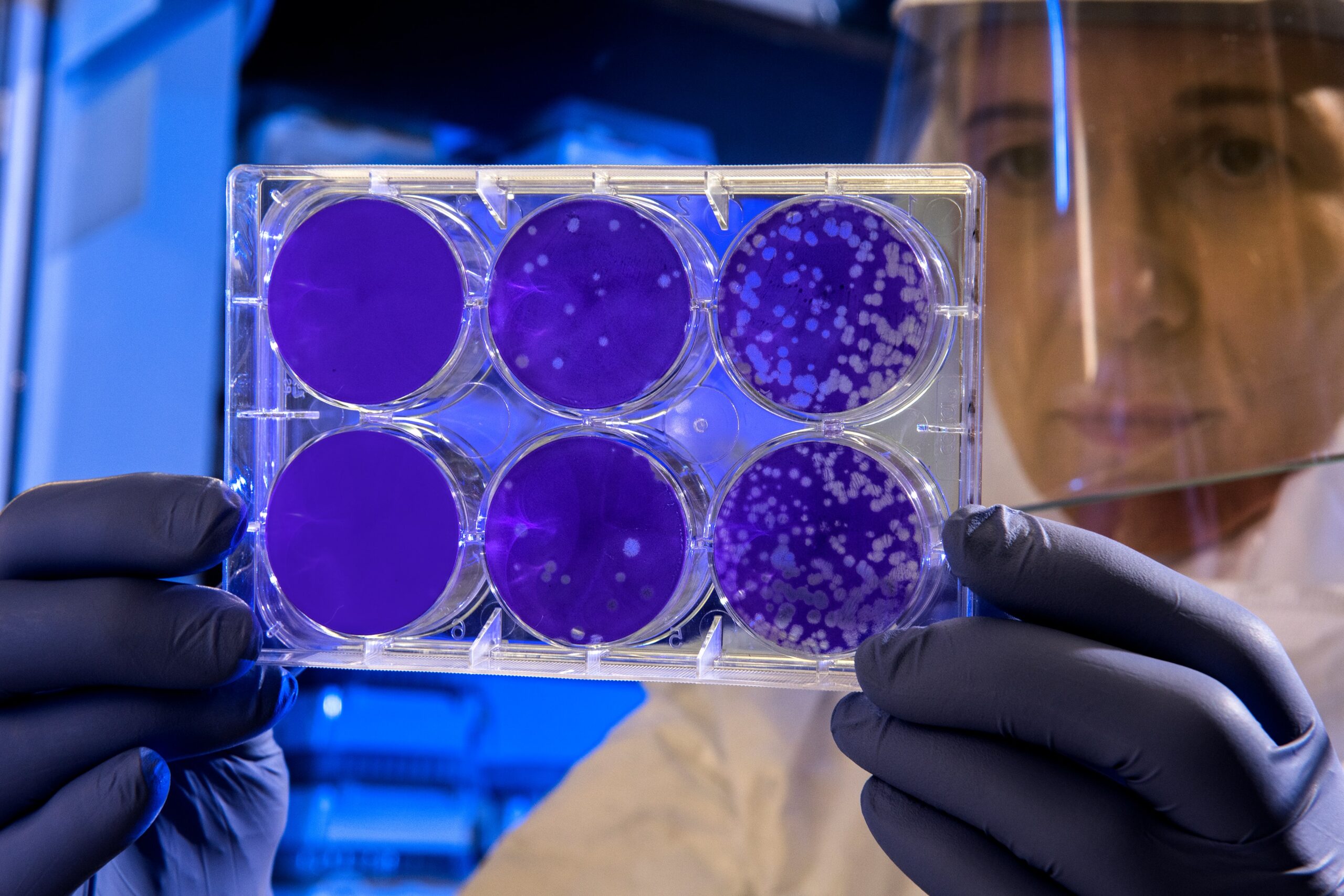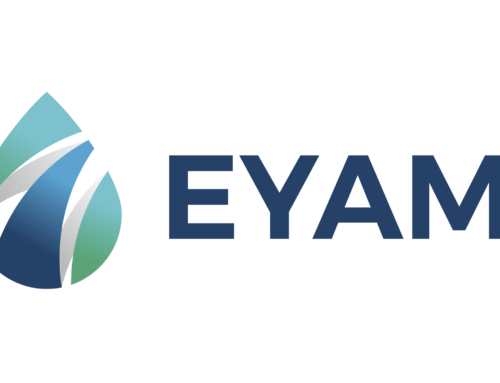Monkeypox and Vaccines
July 31, 2022
By Ryan M. Thomas
Many of us are familiar with smallpox, and if you were born before 1972, you’re likely vaccinated against it. Monekypox was discovered in 1959 as an outbreak of a pox-like disease in research monkeys in Copenhagen, Denmark. The first recorded human monkeypox case occurred in 1970 when a nine month old child was admitted to a hospital in the Democratic Republic of Congo. Since then, most outbreaks have occurred in Central and West Africa, but previously, the virus had never spread so quickly or reached so far.
Monkeypox belongs to the genus Orthopoxvirus, the same family that includes smallpox, and while symptoms are similar they’re currently less severe. Similar to smallpox, this is a DNA virus that is particularly attracted to skin tissue. As far as we know, smallpox is exclusively a virus that attacks humans and we were able to eradicate it through a worldwide vaccination campaign. The challenge with monkeypox is that it has animal reservoirs, meaning that it’s a virus that can jump between species.
There seem to be two different strains of monkeypox at this time, the West African strain that is now spreading throughout Europe and North America, and Congo Basin strain mainly in Cameroon at this point. The West African strain has produced a fatality rate between 1-3%, similar to what we saw from COVID-19 in 2020, but the Congo Basin strain has a much higher fatality rate, perhaps as high as 10% of those infected. It’s important to note that these rates were first observed in the Democratic Republic of Congo where patients may have had less access to advanced medical care.
A recent paper published in Nature Medicine shows that the current virus, a descendant of the strain that first circulated in Nigeria, has been undergoing accelerated evolution by mutating far more frequently than expected. It is unclear whether the mutations are just an indication that the virus is mutating harmlessly or if it has become better at infecting them.
Scientists are concerned that as the number of infections increases, so does the chance the virus will improve its ability to infect or transmit among humans.
What we’re seeing today, however, is the largest known outbreak of the disease on record and last week was classified by the World Health Organization as a global health emergency.
Monkeypox Symptoms
Lymphadenopathy is a distinctive feature of monkeypox compared to other diseases that may initially appear similar (chickenpox, measles, smallpox) the skin eruption usually begins within 1–3 days of the appearance of fever. A rash tends to be more concentrated on the face and extremities rather than on the trunk. It affects the face, in 95% of cases, and palms of the hands and soles of the feet in 75% of cases. Finally, the number of lesions can vary from a few to several thousand.
Current Spread
More than 18,000 cases of monkeypox have been reported globally from 78 countries, with the majority in Europe and spreading quickly in the United States. Around 10 percent of patients have been hospitalized in the current outbreak and five have died, all of them in Africa.
How is it spread?
As we spoke about in a previous newsletter, some viruses are known to jump from animals to humans and are called zoonotic transmissions. These transmissions are more frequent if a human has direct contact with blood or bodily fluids of the animal.
When a virus jumps between species, it often achieves certain mutations allowing the virus to have new advantages like increased infectiveness, ability to evade the immune system, or to cause more severe infections.
The Center for Disease and Control is warning that monkeypox can be spread to anyone through “close, personal, often skin-to-skin contact.” Currently, the W.H.O says that the majority of the transmission is occurring through sexual contact “involved mainly, but not exclusively, men who have sex with men.” While sex between men is currently the main source of the spread, it will likely not remain so as the virus only needs close skin contact to be spread.
Dr. Anthony Fauci warned two weeks ago that global leaders needed to do more to stop the spread of the disease, but other experts are now saying that the window to control it has already closed.
What vaccines do we have for monkeypox?
Scientists believe that the smallpox vaccine creates cross protection against the monkeypox virus, and evidence suggests that the majority of those infected were in fact too young to have been vaccinated against smallpox. Debates are occurring amongst scientists and global health officials about the possibility of rolling out another large scale vaccination program against monkeypox possibly using the stockpiles of smallpox vaccines, but that solution isn’t very likely in its current form.
The smallpox vaccine is not administered in the same way we receive the flu shot or the COVID vaccine, it involves a two-pronged needle and is much more painful. The other drawback is that the adverse side effects are much higher because of the toxicity of the vaccine.
Another vaccine, Jynneos, is an FDA approved vaccine against monkeypox, but is slow and cumbersome to produce and manufacture.
While the news is not great about monkeypox, it’s unlikely to spread as quickly as COVID-19 and current therapeutics have thus far proven to be effective in preventing death. New, low dose vaccines that are safer and easier to manufacture, however, will be necessary in preventing the disease from continuing to spread and becoming endemic in the global population.
Monkeypox Origins
July 31, 2022
By Ryan M. Thomas
Many of us are familiar with smallpox, and if you were born before 1972, you’re likely vaccinated against it. Monekypox was discovered in 1959 as an outbreak of a pox-like disease in research monkeys in Copenhagen, Denmark. The first recorded human monkeypox case occurred in 1970 when a nine month old child was admitted to a hospital in the Democratic Republic of Congo. Since then, most outbreaks have occurred in Central and West Africa, but previously, the virus had never spread so quickly or reached so far.
Monkeypox belongs to the genus Orthopoxvirus, the same family that includes smallpox, and while symptoms are similar they’re currently less severe. Similar to smallpox, this is a DNA virus that is particularly attracted to skin tissue. As far as we know, smallpox is exclusively a virus that attacks humans and we were able to eradicate it through a worldwide vaccination campaign. The challenge with monkeypox is that it has animal reservoirs, meaning that it’s a virus that can jump between species.
There seem to be two different strains of monkeypox at this time, the West African strain that is now spreading throughout Europe and North America, and Congo Basin strain mainly in Cameroon at this point. The West African strain has produced a fatality rate between 1-3%, similar to what we saw from COVID-19 in 2020, but the Congo Basin strain has a much higher fatality rate, perhaps as high as 10% of those infected. It’s important to note that these rates were first observed in the Democratic Republic of Congo where patients may have had less access to advanced medical care.
A recent paper published in Nature Medicine shows that the current virus, a descendant of the strain that first circulated in Nigeria, has been undergoing accelerated evolution by mutating far more frequently than expected. It is unclear whether the mutations are just an indication that the virus is mutating harmlessly or if it has become better at infecting them.
Scientists are concerned that as the number of infections increases, so does the chance the virus will improve its ability to infect or transmit among humans.
What we’re seeing today, however, is the largest known outbreak of the disease on record and last week was classified by the World Health Organization as a global health emergency.
Monkeypox Symptoms
Lymphadenopathy is a distinctive feature of monkeypox compared to other diseases that may initially appear similar (chickenpox, measles, smallpox) the skin eruption usually begins within 1–3 days of the appearance of fever. A rash tends to be more concentrated on the face and extremities rather than on the trunk. It affects the face, in 95% of cases, and palms of the hands and soles of the feet in 75% of cases. Finally, the number of lesions can vary from a few to several thousand.
Current Spread
More than 18,000 cases of monkeypox have been reported globally from 78 countries, with the majority in Europe and spreading quickly in the United States. Around 10 percent of patients have been hospitalized in the current outbreak and five have died, all of them in Africa.
How is it spread?
As we spoke about in a previous newsletter, some viruses are known to jump from animals to humans and are called zoonotic transmissions. These transmissions are more frequent if a human has direct contact with blood or bodily fluids of the animal.
When a virus jumps between species, it often achieves certain mutations allowing the virus to have new advantages like increased infectiveness, ability to evade the immune system, or to cause more severe infections.
The Center for Disease and Control is warning that monkeypox can be spread to anyone through “close, personal, often skin-to-skin contact.” Currently, the W.H.O says that the majority of the transmission is occurring through sexual contact “involved mainly, but not exclusively, men who have sex with men.” While sex between men is currently the main source of the spread, it will likely not remain so as the virus only needs close skin contact to be spread.
Dr. Anthony Fauci warned two weeks ago that global leaders needed to do more to stop the spread of the disease, but other experts are now saying that the window to control it has already closed.
What vaccines do we have for monkeypox?
Scientists believe that the smallpox vaccine creates cross protection against the monkeypox virus, and evidence suggests that the majority of those infected were in fact too young to have been vaccinated against smallpox. Debates are occurring amongst scientists and global health officials about the possibility of rolling out another large scale vaccination program against monkeypox possibly using the stockpiles of smallpox vaccines, but that solution isn’t very likely in its current form.
The smallpox vaccine is not administered in the same way we receive the flu shot or the COVID vaccine, it involves a two-pronged needle and is much more painful. The other drawback is that the adverse side effects are much higher because of the toxicity of the vaccine.
Another vaccine, Jynneos, is an FDA approved vaccine against monkeypox, but is slow and cumbersome to produce and manufacture.
While the news is not great about monkeypox, it’s unlikely to spread as quickly as COVID-19 and current therapeutics have thus far proven to be effective in preventing death. New, low dose vaccines that are safer and easier to manufacture, however, will be necessary in preventing the disease from continuing to spread and becoming endemic in the global population.






